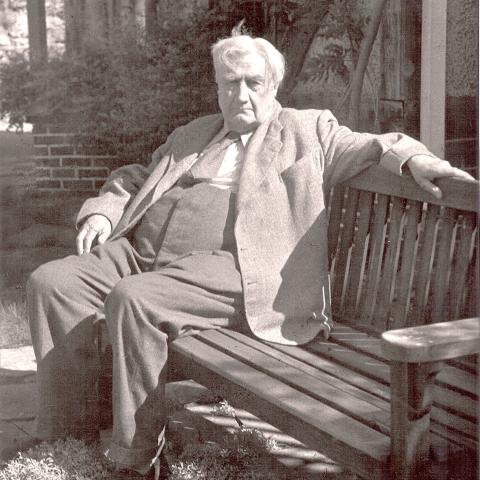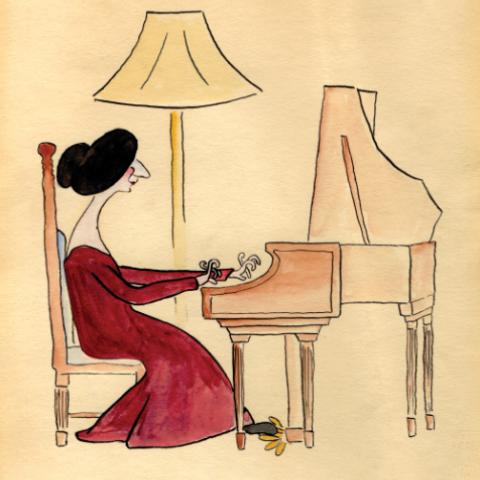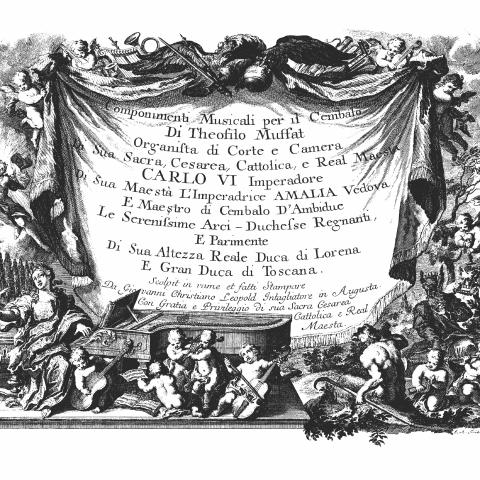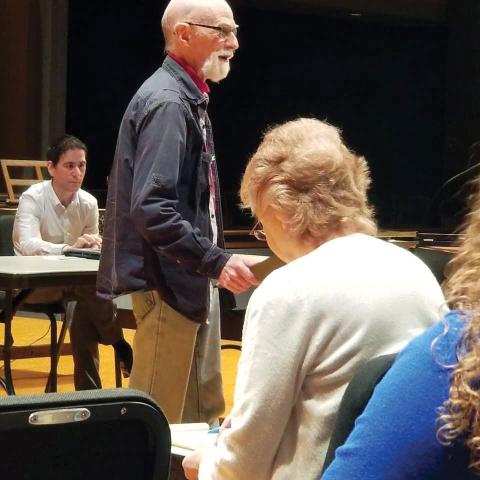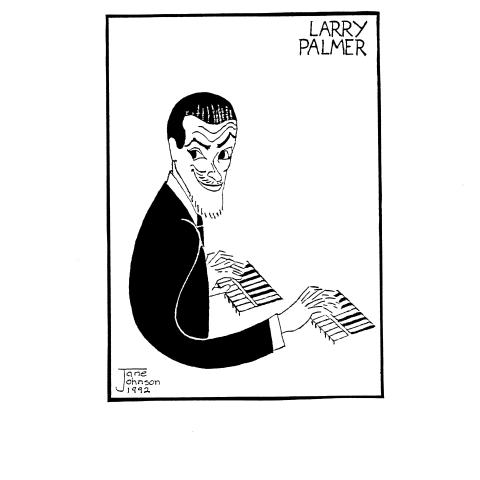
Celebrating Herbert Howells
Born on October 17, 1892, Herbert Howells lived until February 23, 1983. While he was seeking information needed to write his book on Domenico Scarlatti, Ralph Kirkpatrick found several Scarlattis listed in a Spanish telephone directory, phoned them, and discovered that they were, indeed, descendants of the great master. Imitating that search for knowledge, I found Howells’s address and phone number in the phone directory for greater London and made my telephone call to his Barnes home during a visit to the UK in 1974. I have often thought that Mrs. Howells, by this time hard of hearing, may have thought that I was Herbert’s biographer, Christopher Palmer, when she directed me to contact her husband in his studio at the Royal College of Music. I made an appointment for the next day, and, with the utmost delight, spent one of the most stimulating and memorable visits of a lifetime, one that initiated a foundation for several subsequent meetings, and ultimately resulted in my commissioning the Dallas Canticles for St. Luke’s Episcopal Church in Dallas, Texas, the only set Howells composed for an American parish church. As our friendship blossomed he also transferred to me the copyright for his glorious Dallas “Magnificat” and “Nunc Dimittis,” and we had quite a prolific correspondence about the various legal matters involved.
One of my reasons for wanting to speak with Herbert was that he had never responded to my written questions about the persons named in each of the twelve pieces that comprise Lambert’s Clavichord, the first contemporary music for the instrument to be published in the twentieth century. I wrote about his generous answers in The Diapason issue of December 1974 (pages 7 and 8), but there have been some interesting addenda in various publications since that time, and what better way to celebrate the 127th occurrence of HH’s natal day than to share this information?
The first mention of Howells’s neo-Elizabethan keyboard works came during my very first year of harpsichord study with Isolde Ahlgrimm in Salzburg (1958–1959). In 1961 I acquired my first copy of Lambert’s Clavichord (Oxford University Press). It is a reprint in larger format of the original printing, which was a deluxe limited edition of 175 hard-bound copies autographed by Lambert (with a faint pencil signature below the photograph of Howells and the clavichord built by Lambert, who was a famous photographer, and autographed also by the composer, who numbered each volume and signed his name in bold black ink). I acquired my prized copy of this deluxe edition (number 8) at a London antiquarian bookshop in 1981. The hardbound volume is the perfect size for a clavichord’s music desk: 10 inches wide by 61⁄4 inches high, exactly one half the height of the later trade print edition.
Very briefly, the reason that Howells composed all twelve of the keyboard pieces was that, in gratitude for his being the next-to-youngest composer photographed and included in Lambert’s 1923 publication, Modern British Composers (from Elgar, born 1857, to Howells and Goossens, born 1893), he wrote the first piece (“Lambert’s Fireside”) while at the photographer’s home and decided to invite his fellow composers to create a similar gift for Lambert and his clavichords. All of them responded in the affirmative, but a year or more later, no other musical offering had been received, so Herbert decided to write the remaining eleven pieces himself. Each is dated, and each has a designated musical figure in the title (not necessarily one of the photographed composers).
All of the identities spoken to me by Dr. Howells are confirmed by the “other Palmer,” Christopher (1946–1995), who died at age 48, but left an amazingly large list of compositions and studies of musical figures. In his 1978 Novello small book, Herbert Howells: A Study, CP’s listings of the Lambert’s Clavichord titles agree with my 1974 verbatim ones from the composer himself, except for one: the dedicatee of “Sargent’s Fantastic Sprite.” Howells told me that it was meant for Sir Malcolm Sargent, the conductor; however, in Christopher’s copy of the score (as quoted in the Novello volume) Howells wrote: “There never was another Sargent save the painter.” So one might choose a favorite, or mention dual remembrance, since both the composer and author have passed on. I rather think the music could suggest the painter, but . . . who knows?
Music by Howells is never far from my various music desks, and much of the inspiration for this column was through a chance finding of a score that I had forgotten: Six Pieces from Lambert’s Clavichord, arranged for oboe and piano. The half of the collection chosen—“Lambert’s Fireside,” “Fellowes’s Delight,” “Hughes’s Ballet,” “My Lord Sandwich’s Dreame,” “De la Mare’s Pavane,” and “Sir Hugh’s Galliard”—are my favorites, too, and I hope to program them, using harpsichord, later during the 2020 season. (The pieces are published in one volume by Oxford University Press; the arrangements are by Patrick Shannon.) That these pieces were favorites of the composer is evident, both from his own mouth, and from yet another source, thanks to Christopher Palmer. In his very comprehensive book, Herbert Howells: A Centenary Celebration (London: Thames Publishing), I noticed on page 458 a listing of three arrangements for cello and piano from the RCM Library Howells manuscripts: “My Lord Sandwich’s Dream,” “Sir Hugh’s Galliard,” and “De la Mare’s Pavane”—it might lead one to make some transcriptions of one’s own, should any of the other movements be special favorites.
And finally, two suggestions for those of us who play the organ: a gentle, lovely two-page “Cradle Song,” Howells’s contribution to the Organists Charitable Trust Little Organ Book: eleven pieces for solo organ from the nineteenth to the twenty-first centuries, selected and edited by Martin Neary, published by Novello (2010). And, reminiscent of his close friendship with Ralph Vaughan Williams, Howells’s Master Tallis’s Testament, another ravishingly lovely creation, and another indication of how comfortable he felt dealing with the harmonies of Elizabethan music.


